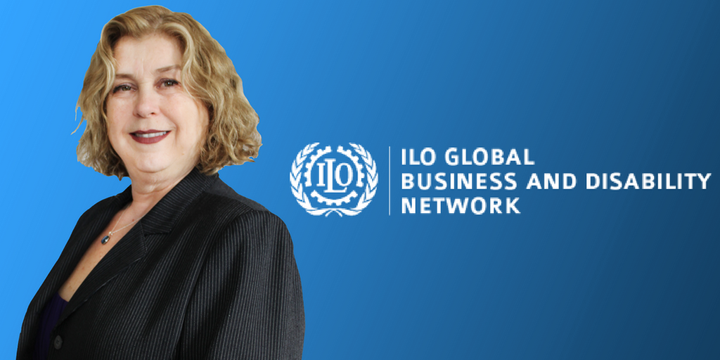
Debra Ruh in Support of the ILO GBDN - International Labour Organization Global Business and Disability Network
I have enjoyed collaborating with the International Labor Organization (ILO) to bring more US based multi-national companies into the Global Business and Disability Network (GBDN). Esteban Tromel’s leadership adds enormous value to the global conversation. I am committed to help raise other corporate voices from the United States (U.S.) in the ILO GBDN and other global discussions to ensure that best practices are effectively communicated, dispersed and shared.

Esteban Trömel – Senior Disability Specialist of The International Labour Organization (ILO)
I am honored to work with corporate brands all over the world on strategies to fully include persons with disabilities as colleagues and employees, and as clients assuring their services and products are accessible. Since early 2000, we also have leveraged social media and other marketing channels to tell the stories of these brands to consumers who care about social impact and inclusion.
As I travel globally, I am often asked questions such as:
“Do the litigation efforts to assure disability inclusion and accessibility in the U.S. marketplace help or hurt the community and the global efforts towards full inclusion?” or “Does the litigation in the U.S. cause an ‘us versus them’ mentality?”
The answer is it both helps and hurts U.S. based corporations.
It has been interesting to watch the global landscape change with these conversations over the years. U.S. corporations have been making efforts for years to include persons with disabilities fully as employees, clients, and as stakeholders. The bottom line is that litigation has helped and hurt these efforts. The U.S. is one of the most accessible countries in the world. At the same time, the U.S. still has a lot of work to do with the inclusion of persons with disabilities in their workforce and customer base.
In late 2014, I started writing my book, "Uncovering Hidden Human Capital: How Leading Corporations Leverage Multiple Abilities in Their Workforce" Published by G3ict in 2016.
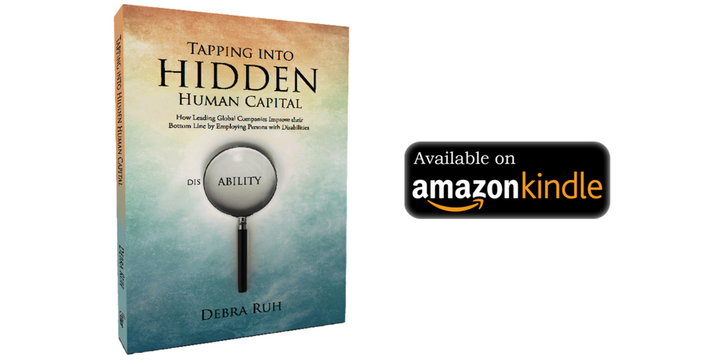
Uncovering Hidden Human Capital: How Leading Corporations Leverage Multiple Abilities in Their Workforce" Published by G3ict in 2016.
At the time, I asked approximately ten U.S. based multi-national brands to be part of the best practice sections of the book. Many of the corporations came back and said, ‘Debra, we would love to be featured in the book, but our legal team has said no.” They were nervous about being featured in my book as demonstrating a best practice because they felt it made them a target for additional lawsuits.
Back in 2012, I wrote a blog about Walt Disney Parks & Resorts called ‘No Good Deed Goes Unpunished’. The blog explored the class action lawsuit back in 2011 against Walt Disney Parks & Resorts. I was perplexed with this Americans with Disability Act (ADA) lawsuit. Why the surprise? The American Foundation for the Blind (AFB) had just awarded Disney with a 2011 Access Award, one of the highest honors a brand can get from the community of persons with disabilities in the U.S.

Cinderella’s Castle, Walt Disney World
I am not here to debate the merits of the case, but it was confusing for Disney to win this award and then immediately get sued for violating the ADA. Are they horrible, wonderful, or maybe just trying their best?
I understand many moving parts exist when dealing with disability inclusion and accessibility. However, the litigious approach can send the wrong message to brands. When I asked major multi-national brands in the U.S. in 2014 to be part of my book, they quickly said, “no Debra we have not done enough.”
It made me sad because many brands in the U.S. have been working on disability inclusion and accessibility for many years. Are they perfect? NO! Are they trying? Absolutely.
For the past year or so, we have used various communication channels to encourage our community of persons with disabilities to reward brands that are trying by ‘voting with our wallets.' I am active on social media and talk about brands that are seeking to include us all over the world.

One fashion brand,Tommy Hilfiger, supports our community by creating an Adaptive Clothing line for children with disabilities. Based upon the initial success of the line, Tommy Hilfiger now wants to expand this effort to adults and help the rest of the fashion industry understand the win for everyone. They also have clothes at all price points. I have become a loyal Tommy Hilfiger customer and love that they have clothes for all members of my family and friends including those with disabilities. I eagerly want to know about other brands that are supporting my community so that I can support them in return.
Back to my book. It took a few years to get my book completed. In early 2016, several of the U.S. brands that had declined in late 2014 came back and asked if they could be in the book. I asked them what had changed. The central theme: Inclusion of persons with disabilities is part of our efforts. “We understand that operating in the U.S. means we may face lawsuits. It is just part of doing business in the U.S. So instead of focusing on being perfect, we want to share our stories of inclusion and accessibility with the community of persons with disabilities. By telling the stories of the brands that are working towards full inclusion, we can hopefully educate the entire ecosystem about how the great benefits of inclusion greatly outweigh the complexities.
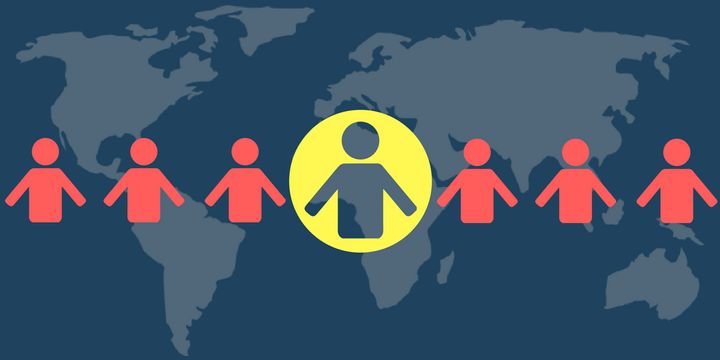
According to the World Health Organization (WHO), 1 in 7 individuals in the world has a disability
Remember this story is not only for the community of persons with disabilities despite its size. According to the World Health Organization (WHO), 1 in 7 individuals in the world has a disability. Plus, according to National Organization on Disabilities (NOD), 1 in 5 people in the U.S. identify as having a disability under the definition of the ADA. However, other people not impacted by disabilities also care about a company’s efforts. The millennial generation has clearly stated in various studies that they are willing to pay more money to do business with brands that have a positive social impact.
It is hard to ignore that audience. However, if our community does not understand which brands are trying to include us, the brands cannot get a positive Return on Investment (ROI) for their efforts. It is critical to understand that this is NOT about ‘The Right Thing to Do”, and it is naïve to think that corporations should not make money through their inclusive efforts. That’s what they are in business for, to make money. Instead, this is about changing the world to assure that we all have a place to contribute and work, and that we as the community know which brands are trying. If these brands do not make money by creating products and services that include our community, then we all fail.
If the community of persons with disabilities starts supporting brands that support us, instead of suing brands that are not doing enough, we all win.
These efforts will lead to better employment outcomes and options for the community of persons with disabilities around the world. Full inclusion of a diverse workforce that includes individuals with disabilities is an important part of a brand's identity.
Many of these brands are multi-national corporations that are headquartered in the United States or have a national presence here. I have noticed many U.S. brands are only in national conversations, not in global discussions, about their efforts with disability inclusion and accessibility.
It is critical for US based corporations to join the global conversations about best practices, case studies, risks, and innovations. Why? Many US based corporations have employees and customers living outside the US. If we are not taking part in global and national conversations, we risk falling behind or not adding our voices to the discussions.
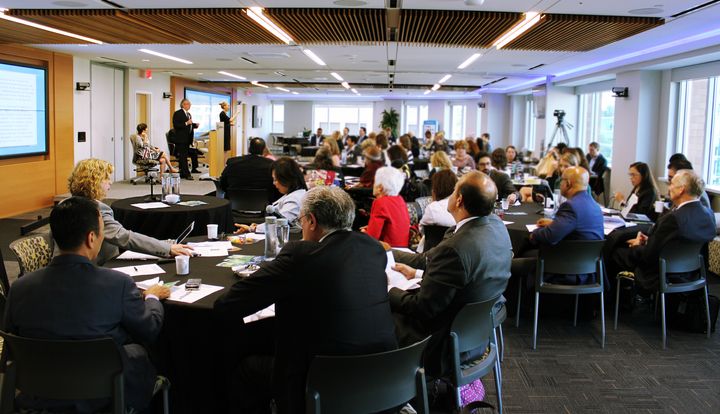
In an effort to promote U.S. company membership in the ILO Global Business and Disability Network (GBDN), USCIB, AT&T and the ILO held an event at the AT&T Forum in Washington DC on June 20 for business leaders, “Promoting disability inclusion globally.
On June 20, 2017 the ILO and USCIB co-hosted a meeting with 35 major U.S. based corporations talking about inclusion of persons with disabilities in their workforces. AT&T graciously hosted the meeting in the AT&T Forum in DC. We had corporate speakers from AT&T, Accenture, Boeing, Cisco, Deloitte, JLL Consulting, L’Oreal, and Repso talking about their efforts to assure full inclusion and accessibility.
It was exciting to watch these billion dollar brands talk about their efforts. These brands need a place that is safe to learn from other brands and share successes, fears, and ideas. These brands are multi-national so having a global network to ask questions about disability employment and inclusion in other countries is an invaluable resource.
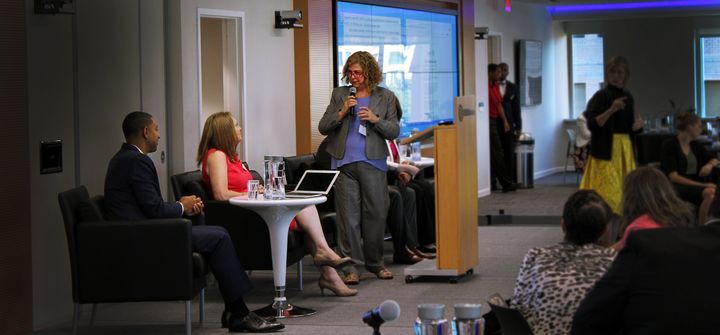
Debra Ruh speaking on the panel at the “Promoting disability inclusion globally” event presented by ILO, USCIB, and AT&T
If you are a corporation in the United States that wants to join the global B2B conversation, please consider becoming a member of the ILO GBDN. The U.S. needs to have our voices heard in these global conversations. It is one way for the community of persons with disabilities to learn about your efforts.
For more information about the ILO Global Business and Disability Network (GBDN) visit their website. I have also included a little more data about the ILO GBDN below.
The ILO Global Business and Disability Network presents a unique platform for multinational enterprises to advance their commitments to workplace diversity as it relates to people with disabilities. Structured as a public-private partnership, the Network offers its business members with opportunities to engage with a range of stakeholders, including the ILO, UN agencies, employers’ organizations, governments, disabled people’s organizations, universities and the civil society.
Accenture | Accor | Adecco | AXA | BNP Paribas | Carrefour | Casino Group | Dow Chemical Company | ENGIE | IBM | L’Oréal | Michelin | Novartis | Orange | Repsol | Société Générale Group | Sodexo | Standard Bank | Standard Chartered Bank | Telenor
Thanks to these global brands for their leadership and for their efforts to include the community of persons with disabilities.
To learn more about Ruh Global Communications, please visit our website: www.RuhGlobal.com

